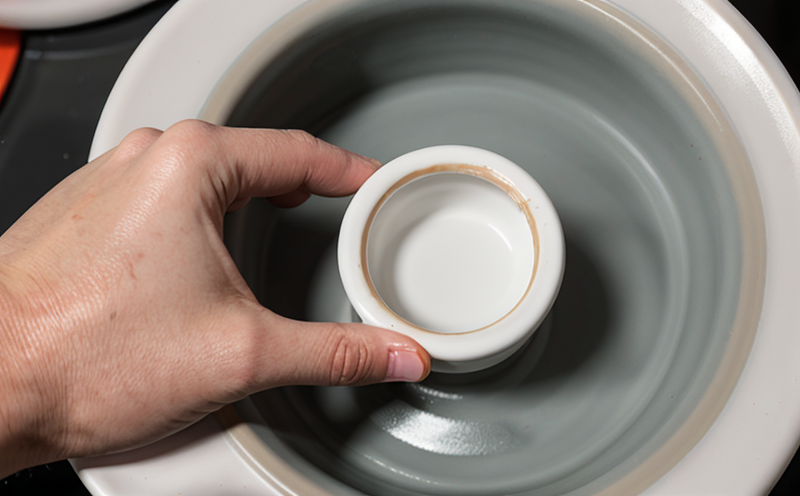DIN EN 843 4 Fracture Toughness of Nanostructured Ceramics
The test method described in DIN EN 843-4 is designed to determine the fracture toughness (KIC) of nanostructured ceramics. This parameter is crucial for understanding the material's resistance to crack propagation under static loading conditions, which has significant implications in various sectors such as aerospace, automotive, and electronic packaging.
The process involves creating a precisely defined notched specimen from the ceramic material. The specimen is subjected to a controlled tensile load until failure occurs, capturing the energy required for fracture initiation and propagation up to complete fracture. The accuracy of this test depends on meticulous sample preparation, including the precise control of grain size distribution and surface finish.
The choice of testing apparatus plays a critical role in achieving accurate results. Instruments like hydraulic or pneumatic tensile testers with high resolution are typically used. Specimens must be mounted correctly to ensure they experience uniform stress and strain fields during loading. The test setup also includes environmental control, such as temperature regulation, which can influence the mechanical properties of ceramics.
In terms of specimen preparation, it is essential to maintain a consistent microstructure by controlling sintering parameters and post-processing techniques. This ensures that any observed differences in fracture behavior are attributed solely to the inherent properties of the nanostructured ceramic rather than processing variability.
The acceptance criteria for this test include meeting specified values for KIC as outlined in the standard. Compliance with these criteria is vital for ensuring material quality and reliability, especially when designing components that will operate under high-stress conditions. Failure to meet these standards could lead to premature failure of structural elements.
Test Parameters and Specimen Preparation
- Type of specimens: Notched tensile specimens with predefined dimensions.
- Loading conditions: Controlled tensile load applied until specimen failure.
- Environment control: Temperature and humidity regulated within specified limits to minimize variability.
Why It Matters
The importance of fracture toughness testing cannot be overstated, especially for nanostructured ceramics. These materials are increasingly used in demanding applications where they need to withstand significant mechanical stress without failing.
- Aerospace Applications: Lightweight and high-strength components require a thorough understanding of their mechanical properties under various loading conditions.
- Automotive Industry: Engine parts, structural elements, and safety systems benefit from materials that can absorb substantial energy before failure.
- Electronic Packaging: Ensuring the integrity of electronic components housed in ceramic packaging is vital for reliable performance.
The ability to predict how nanostructured ceramics will behave under stress allows engineers and designers to make informed decisions about material selection, component design, and manufacturing processes. This not only enhances product performance but also contributes to longer service life and improved safety standards.
Environmental and Sustainability Contributions
- Resource Efficiency: Nanostructured ceramics can be engineered to have higher strength-to-weight ratios, reducing the overall mass of components without compromising safety.
- Eco-Friendly Manufacturing: By optimizing material properties during production, manufacturers can reduce energy consumption and waste generation.
The use of nanostructured ceramics in various industries promotes sustainable practices by enhancing product durability and reducing the frequency of replacements. This extends the lifecycle of products, thereby minimizing environmental impact.
Competitive Advantage and Market Impact
- Innovation Leadership: Companies that invest in advanced testing methods like DIN EN 843-4 can stay ahead of competitors by offering superior products.
- Better Product Quality: Enhanced understanding of material properties leads to improved product design, potentially increasing market share and customer satisfaction.
The ability to demonstrate compliance with international standards like DIN EN 843-4 can be a significant differentiator in the competitive landscape. It assures customers and stakeholders that products meet stringent quality and safety criteria.





